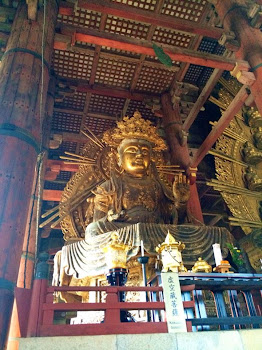
Difficile de rendre en photo l'effet que fait ce parc. Sur chacune de ces pierres, 30 lignes et 7 colonnes de noms, ceux des gens mort lors de la bataille d'Okinawa, l'une des batailles les plus meurtrières de la guerre du pacifique.
Les pierres s'étendent à perte de vue et des noms se rajoutent encore chaque année, quand des restes de corps sont retrouvés lors de travaux.
Le musée et l'histoire qu'il raconte sont encore bien plus dur.
L'empire de Ryuku n'est devenu japonais qu'en 1879, et à partir de cette date l'empereur japonais a bien entendu tout fait pour s'assurer la loyauté de ce groupement d'îles. Nouvelle langue, nouvelle éducation... bref, endoctrinement classique.
Fast forward quelques années, les américains débarquent, gagnent un quart du territoire en 3 jours, la moitié en 10. Les civils se réfugient dans les grottes calcaires naturelles où ils cohabitent souvent avec les soldats japonais venus défendre l'île. La nourriture est rare et les bombes pleuvent (en 3 mois, 6,800,000 obus ont été lâchés, soit environ 50 par habitant). On tue les bébés de peur que leurs cris attirent l'ennemi, on meurt de faim, etc.
De peur de fuites de secrets militaires, l'armée japonaise a raconté les pires horreurs aux Okinawaiens en leur disant que c'est ce qui leur arriverait sans aucun doute s'ils étaient capturés vivant, et c'est ainsi que de nombreuses personnes ont choisies de se jeter d'une falaise, ou de s'entre-tuer plutôt que de se rendre à l'ennemi.
Au total, plus de 200,000 morts en 90 jours, dont environ 100,000 civils.
Ça réveille des réflexions trop facilement endormies et donne un autre regard sur l'île, où la présence militaire US est encore très forte.






































































